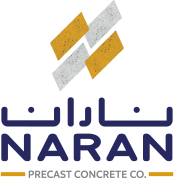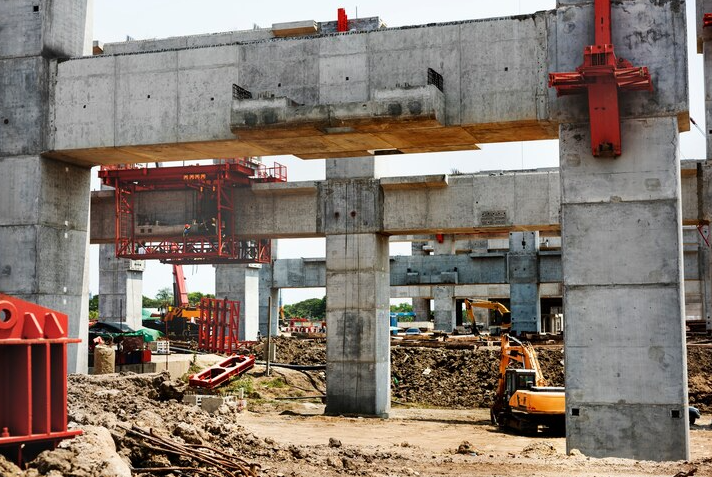The construction industry is continuously evolving and a major breakthrough in this area is the increasing use of precast concrete. This versatile and durable material is superior to traditional methods and that allows it to play a vital role in urban infrastructure development.
Precast concrete finds numerous applications across various fields offering benefits like higher durability, time-saving, cost-effectiveness, as well as quality control.
Precast concrete is a material that can meet the needs of the growing urban population by providing every interconnected infrastructure with reliable support.
This blog explores the role of precast concrete in the development of modern infrastructure in detail. So, without any further ado, let’s go right ahead and see what this innovative construction solution has to offer.
- What is Precast Concrete?
- Benefits of Using Precast Concrete in Infrastructure Development
- Improvement in Quality & Durability
- Enhanced Design Flexibility
- Sustainable Development
- Time and Cost-Saving
- Fire and Blast Resistance
- Long Service Life
- The Role of Precast Concrete in Supporting Infrastructure Development
- Smarter Roads
- Bridge Construction
- Public Transportation System Construction
- Residential and Commercial Construction
- Stronger Structural Elements
What is Precast Concrete?
Precast concrete refers to concrete elements used in the construction of urban infrastructure like roads, bridges, manhole chambers, buildings, etc., that are produced off-site in a factory and then simply transported and installed in the construction site.
The process involves pouring concrete into specially designed molds based on the project requirements and then allowing it to cure till it acquires the desired strength.
This method of construction reduces the disruptions on the actual site of work which leads to quicker project completion.
Benefits of Using Precast Concrete in Infrastructure Development
Here are a few reasons why precast concrete is the best choice for urban infrastructure development
1. Improvement in Quality & Durability
The production of precast concrete takes place in a very controlled environment where each step is done carefully to ensure the concrete has a high level of consistency.
This concrete is then tested for strength and durability to ensure it provides the infrastructure with the much-needed support.
2. Enhanced Design Flexibility
Precast concrete further supports infrastructure development by giving designers as well as architects greater freedom in terms of the shape and texture of concrete elements.
This technique allows the creation of molds that facilitate the designing of intricate architectural features on concrete elements. This can help create unique, creative, and aesthetic structures that elevate the quality of the construction work.
1. Sustainable Development
Precast concrete production is less resource-intensive than on-site concrete pouring. The efficiency in resource use, waste reduction, and durability make it a very eco-friendly construction method.
2. Time and Cost-Saving
The precast concrete construction elements are made off-site which reduces disruptions in the actual site of work. Moreover, in this case, both the concrete elements as well as the site can be prepared simultaneously which saves you time.
The use of precast concrete results in reduced labor costs as well as shorter construction times which is very cost-effective as well.
3. Fire and Blast Resistance
The higher strength of this material gives it higher resilience in the face of concussive effects produced by blasts. This makes it an effective material for sensitive data centres, government buildings, and military establishments.
Precast concrete is also resistant to fire which further makes it a safer choice in infrastructure development.
4. Long Service Life
Precast concrete structures possess exceptional strength and durability. These can last for decades without much deterioration. These elements are resistant to moisture, chemical exposure, intense sunlight, and harsh weather conditions.
You can use it alone or reinforce it with stainless-clad steel bars and utilize it in key infrastructure projects to get enhanced quality as well as a service life that spans several decades.
The Role of Precast Concrete in Supporting Infrastructure Development
Here are a few points that further show how precast concrete can provide urban infrastructures with the strength and support
1. Smarter Roads
The roads created using precast concrete give you enhanced load-bearing capacity, low maintenance, and high durability. These smart roads created using precast concrete facilitate a reduction in road congestion which leads to efficient public transport.
Other structures related to roads like curbs, medians, as well as barriers can also be created using precast concrete.
2. Bridge Construction
Bridges are a critical part of any urban infrastructure that facilitates the smooth movement of goods from one location to another. Using precast concrete bridge construction can be done in a record short time.
Moreover, these bridges are also stronger and they need little to no maintenance. This allows for efficient commutes for the people and goods across different regions which improves the quality of life.
3. Public Transportation System Construction
Precast concrete can also be used to create subway stations, train platforms, bus stops, and other key public transportation systems. This ensures sustainable urban mobility by improving this key part of our infrastructure.
You can also use it to create walkways or elevated rail lines giving commuters more efficient and reliable transportation alternatives.
4. Residential and Commercial Construction
Precast concrete is used to create strong structural elements for residential as well as commercial buildings including apartments, houses, warehouses, shopping centres, office buildings, hotels, and much more.
5. Stronger Structural Elements
Precast concrete is used to make a wide range of structural components including beams, walls, slabs, columns, etc. All these structures possess exceptional strength, flexibility, and resilience making these a necessity for lasting urban infrastructure development.
Conclusion
Precast concrete is undoubtedly the future of urban infrastructure development. It provides key infrastructure components like roads, bridges, underground utility systems, and residential/commercial buildings with unparalleled durability and longevity.
The far-reaching benefits of this novel material are what make it an attractive construction tool worldwide.
As the world moves towards sustainability and technological advancement at an ever-increasing pace, the role of precast concrete is expected to grow even further making the whole construction sector better in terms of quality as well as efficiency.Visit Naran Precast Concrete Co. today to order our top precast concrete construction solutions for all infrastructure applications.

